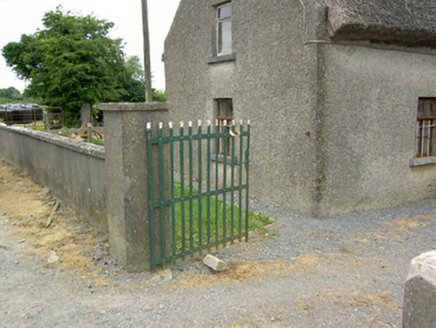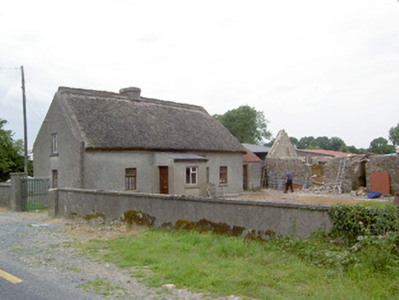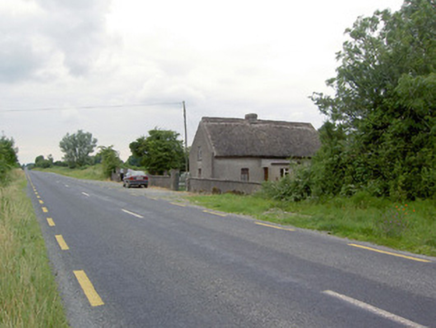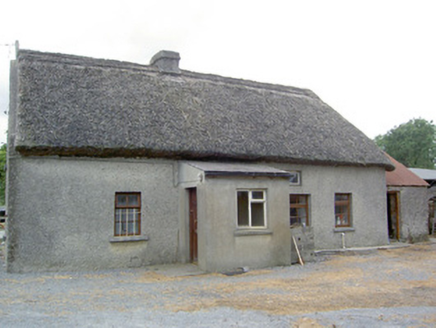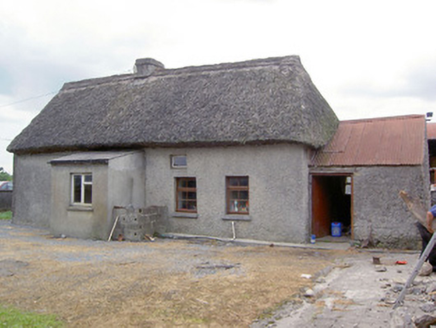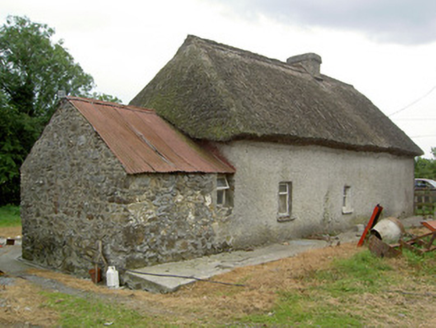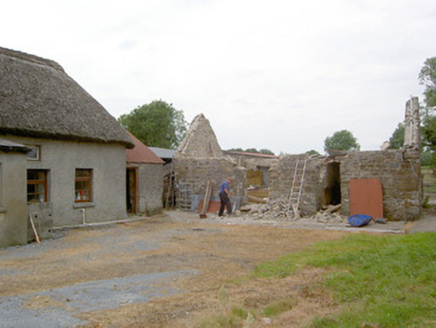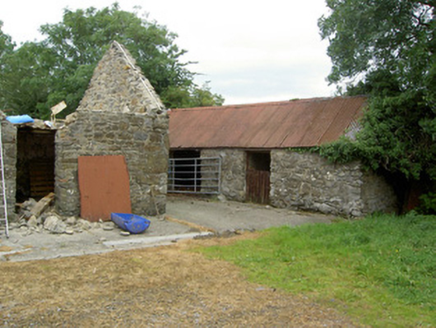Survey Data
Reg No
13402729
Rating
Regional
Categories of Special Interest
Architectural, Technical
Original Use
House
In Use As
House
Date
1780 - 1820
Coordinates
222053, 254784
Date Recorded
27/07/2005
Date Updated
--/--/--
Description
Detached four-bay single-storey vernacular house with attic storey, built c. 1800, having single-bay lean-to entrance porch, 1930, attached to the centre of the front elevation (east). Single-bay single-storey outbuilding with pitched corrugated-metal roof attached to north gable end. Hipped (north end) and pitched (south end) thatched roof with central rendered chimneystack. Roughcast rendered walls; smooth cement rendered finish to porch. Square-headed window openings with rendered sills and replacement timber casement windows. Window opening below eaves to front elevation (east). Square-headed door opening to south face of porch with modern timber panelled door. Set back from road in own grounds to the north side of the main Ballymahon to Mullingar road, aligned at a right-angle to the road-alignment. Rendered boundary wall to road-frontage to south. Gateway to south having rendered gate piers (on square-plan) having wrought-iron flat bar gates. Two detached single-storey outbuildings to site (northeast and east) having rubble stone construction and square-headed openings. Pitched corrugated-metal roof to outbuilding to the east, roof missing to outbuilding to the northeast.
Appraisal
This modest vernacular house retains its early character and form. The loss of the early fittings to the openings fails to detract substantially form its visual expression. The irregular spacing of the window openings, particularly to the rear (west) elevation, gives this building a strong vernacular character and a patina of age. Of particular significance is the survival of the thatched roof, which is now becoming very rare in County Longford. This roof is unusual in that it is hipped to one end and pitched to the other, which probably indicates that this building was extended along its length at some stage. The position of the chimneystack, which is roughly in line with the main entrance, hints that this building has the lobby-entry plan that is characteristic of the vernacular dwellings of the midlands of Ireland. This building is aligned at a right-angle to the road alignment, which is another characteristic feature of the Irish vernacular tradition. The porch is a later addition, probably added during the mid-nineteenth century, but is a feature of surviving vernacular dwellings. Buildings of this type were once a ubiquitous feature of the rural Irish landscape but are now becoming increasingly rare survivals. The simple collection of single-storey outbuildings and the wrought-iron gates add to the context and complete the setting of this building, which is an integral element of the vernacular built heritage of the local area. The site is also interesting as a visible record of the evolution of vernacular roofing materials in the use of thatch to the house and corrugated-metal to the outbuildings.
